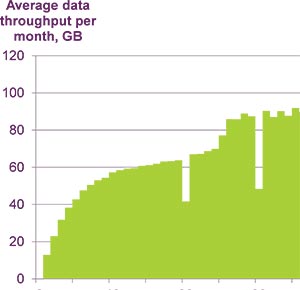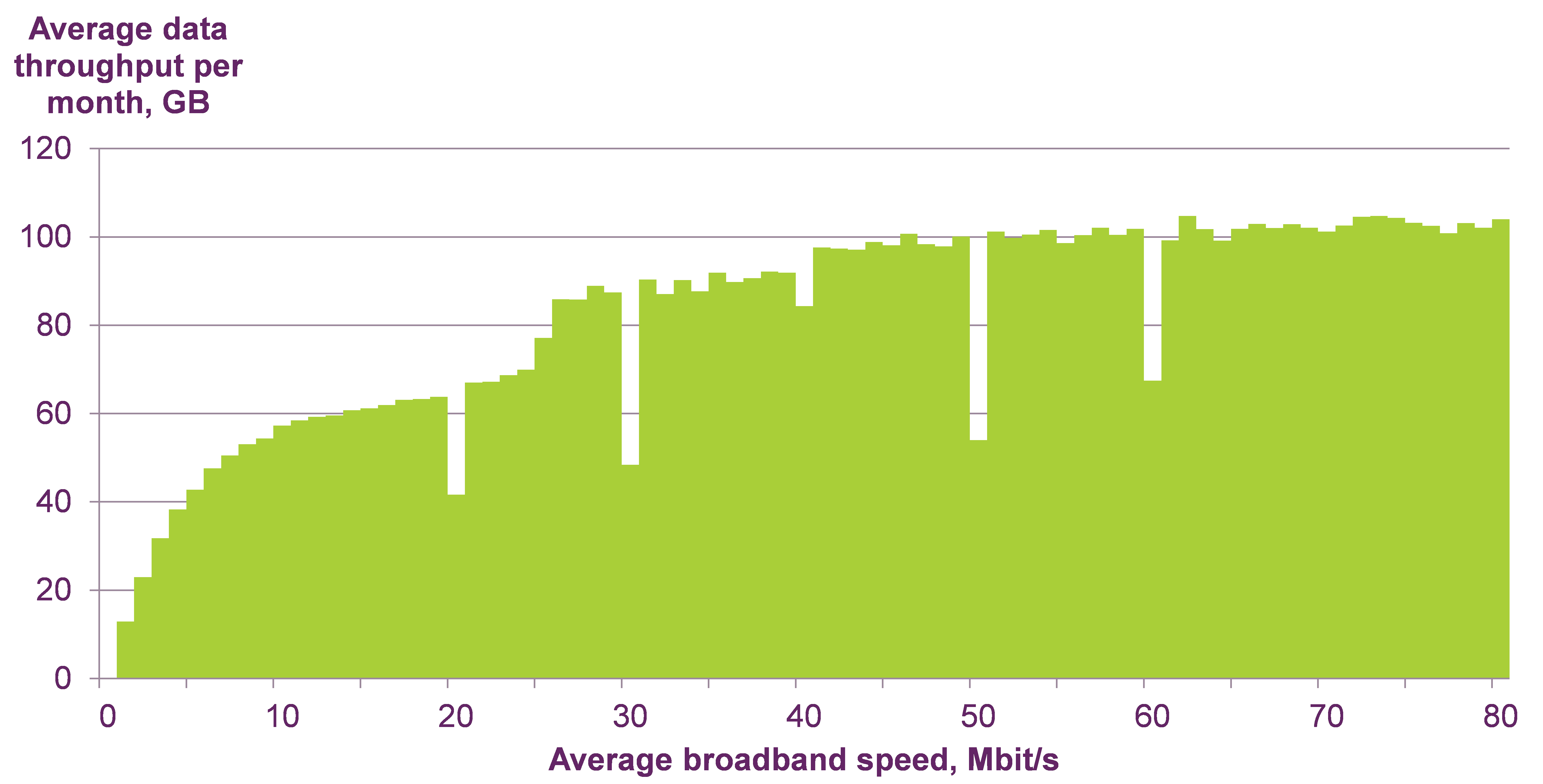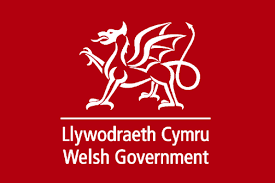Universal coverage and a USO
Getting as many people online and enjoying the benefits of that the internet can bring is an incredibly complex task involving digital skills, attitude and awareness among others. But in many ways the first step is ensuring that the underlying connectivity is available to them. In this light the Government’s desire to “make sure that every home and business can have access to fast broadband by the end of this Parliament??? is to be welcomed.
The Government announced that in order to accomplish this goal it is working towards introducing a Universal Service Obligation which, on current thinking, would be set at 10 Mbit/s. This throws up several questions around balancing the needs of consumers with the commercial reality faced by infrastructure providers.
Firstly, why 10Mbit/s? Ofcom, in its 2014 Infrastructure Report, made clear that it perceived there to be constrained demand for an average household below 10Mbit/s:
There is also evidence from Actual Experience that end-user quality of experience plateau’s for a period around this level. What is less clear, and is obviously an area the Government will consult on, is whether this is just the downstream requirement and whether a USO should also have an upstream requirement. This is particularly key for small businesses; in our Small Business Connectivity Requirements Report we found 50% of small businesses already needed at least 1Mbit/s upload.
So, if we should aim for 10Mbit/s to every premise, then what’s the scale of the challenge?
Currently the industry and Government rollouts have driven superfast broadband coverage (24+Mbit/s) to around 85% of premises, with the Government committed to reaching around 95-96% by the end of 2017. For mobile, 50% of households had 4G coverage from all operators with mobile operators (MNOs) commercial deployments rolling out quickly – indeed all four MNOs have targeted 98% coverage by the end of this year. Mobile broadband speeds are more susceptible to variables but average 4G download speeds are around 15 Mbit/s.
Under the Digital Communications Infrastructure Strategy, albeit published under the Coalition, the Government discussed the possibility of subsidising “superfast capable satellite service…to around a further 1% of premises???. In conjunction with the current superfast test-pilots this may push superfast coverage up to around 97% by the end of 2019. That still leaves 3%, or just under a million, premises without access to superfast coverage. Whilst some of these may receive more than 10Mbit/s this is still a large number of premises to address.
Who pays and where does the USO come into it?
Many of these remaining premises are uneconomical – some of them may become more so as and when planning rules become easier and more predictable, technology innovation overcomes existing barriers and network deployment costs come down – but the bulk will in all likelihood remain outside of companies commercial investment plans.
This broadly leaves four options; Government could fund it directly as through a BDUK style intervention, the consumer could pay for it by being exposed to greater cost (making it more commercially viable), the industry could fund it through a Universal Service Fund, or Ofcom and Government could designate a company(ies) as a USO provider.
In isolation none of these are ideal for such a large target.
The latter two involves utilising the Universal Service Directive. A Universal Service Fund is usually paid by the whole industry, on some sort of market share or per customer basis. This has the benefit of sharing some of the cost, and likely circumventing State Aid problems in urban areas, but would throw up lots of questions around fairness, particularly around who would be able to draw down funds to provide the 10Mbit/s – ie should fixed providers/customers pay for a mobile or satellite solution? These funds can work but as the GSMA noted recently poor design can quickly lead to legal challenges.
Mandating current USO providers (BT and KCOM are currently USO providers for basic telephony) would get around some of the challenges of creating a funding mechanism put would place the entire burden onto the shareholders of one or two companies. Obviously, these options become more palatable as the number of premises that they would target are reduced.
Government has kicked off interesting debate and there will be a variety of views – on what bandwidth constitutes ‘good’ to who pays and who delivers – from industry and other stakeholder. Maybe the most important question is what is the best way to accomplish the overall target of driving out better connectivity to the last 5%? As well as considering a USO, this must involve constantly seeking to sensibly reducing the cost of deploying infrastructure, a technology neutral approach and a range of funding mechanisms – including supply-side intervention.
The BSG, who proposed the original Universal Service Commitment, will be playing an active and role in this debate.






